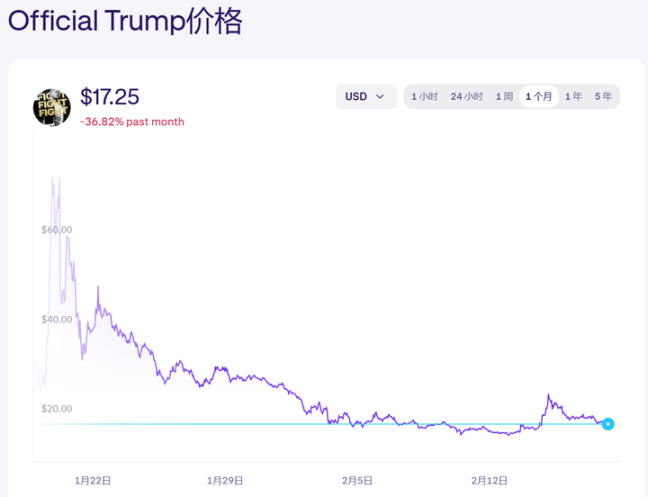Memecoin’s speculative spree is damaging Bitcoin’s credibility. Policy makers and industry leaders must rectify the source, beware of hype scams, and avoid the risk of the crypto market falling into a regulatory crackdown.
Author: Dave Birnbaum
Compilation: Vernacular blockchain

Argentine President Javier Milei meets in Buenos Aires on November 19, 2023
A series of high-profile “Memecoin escapes” incidents are raising concerns that this “crypto” craze is damaging Bitcoin’s reputation as a sound monetary asset. From the Trump administration’s support for TRUMP Token to the First Lady’s Memecoin to Argentina’s LIBRA scandal, these speculative sprees have repeatedly made headlines, blurring the line between Bitcoin, a digital currency that is likely to become the cornerstone of the 21st century economy, and various hype projects that drive up sell-offs.
In any case, Bitcoin will not be greatly affected. But what may be unsustainable is Trump’s plan to reform the regulatory system for digital assets to provide a much-needed framework and clear guidance for financial innovators. On the contrary, this administration’s naive and indiscriminate admiration of the crypto market is hurting retail investors-a bitter reality for the Bitcoin community.
More broadly, the global liberal movement has finally entered the center of power, but may be stigmatized by financial speculation at this critical moment, just as people expect “real adults” to take over the situation. Javier Milei, a learned economist and staunch supporter of sound currencies, has promised radical measures such as shutting down Argentina’s central bank and promoting the development of gold and Bitcoin.
Nowadays, one crypto scam after another is being staged, and the Bitcoin community’s long-standing warnings about “crypto casinos” are being verified. It is not just investors whose leeks have been cut off that suffer. Most new entrants still do not realize the essential difference between Bitcoin and speculative altcoins, and may therefore ignore Bitcoin’s potential as a neutral and unmutable currency. Now is the time for influential figures and policymakers to make it clear: Bitcoin is the only digital asset that can provide truly sustainable value to large institutions and the global economy.
1. The rise and collapse of Memecoin
Recently, Memecoin’s skyrocketing and plunging has created a huge craze and also brought countless heartbreaks. These incidents once again demonstrate the serious consequences of confusing Bitcoin with the entire crypto market.
1) Argentina’s LIBRA farce
In Argentina, a crypto project called LIBRA turned into a national scandal almost overnight. In mid-February, newly elected President-elect Javier Milei-a self-proclaimed libertarian and Bitcoin supporter-posted a post on social media supporting the LIBRA Token and promoting it as a private initiative aimed at boosting Argentina’s economy. Followers and retail investors who were called by Millay flocked to the scene, and the price of LIBRA soared from US$0 to nearly US$5 in an instant.
However, in just a few hours, the price of LIBRA plunged more than 80% to fall below US$1. Blockchain analysts quickly revealed the reason: internal wallets were sold almost immediately after the Token was launched, cashing in more than US$107 million, while ordinary investors could only watch as the funds evaporated. The Argentine Financial Technology Association also admitted that the operation of this incident was no different from a typical “running away” scam.
2) Political turmoil breaks out rapidly
Opposition lawmaker Leandro Santoro quickly spoke out, saying: “This scandal has shamed us internationally and we must launch an impeachment petition against the president.” Millay immediately deleted his promotional post and hurriedly distanced himself from LIBRA, arguing: “I don’t know the specific situation of the project. Once I learned the details, I decided not to promote it.”
But for the thousands of trapped investors, everything is a foregone conclusion. A Token endorsed by the country’s top leaders ultimately proved to be a scam to “pull up shipments”, casting a shadow over Argentina’s first president in at least a century who truly understood the economy. This farce fully demonstrates how irresponsible cryptocurrency policies can undermine the credibility of an entire political movement.
3) Trump’s TRUMP Token
On the other side of the world in the United States, a larger Memecoin craze is unfolding, and this time directly involves the country’s top leaders.
In January this year, U.S. President Donald Trump launched an official Memecoin TRUMP on the Solana blockchain. The Token was promoted as the “only official Trump Memecoin” and relied on Trump’s personal brand and the trust of the MAGA (Make America Great Again) movement to be hyped up before its inauguration.
The extent of this craze is extremely rare even in the cryptocurrency market. In just a few days after its launch, the price of TRUMP soared, with the total market value exceeding US$14.5 billion at one point, and the price of a single item rose to about US$73. This historic increase coincides with the “Crypto Ball” hosted by the Washington D.C., hosted by David Sacks, a technology investor and Trump administration’s “Crypto Tsar.”
However, after the party carnival, reality quickly backfired. As guests at the crypto event were still hung over, TRUMP prices plummeted within days. By early February, in just two weeks, the price of the Token had dropped by two-thirds.
Chainalysis, an online data analysis firm, found that the 50 largest holders each cashed in more than $10 million, while about 200,000 retail investors suffered heavy losses in the slump. In the end, insiders made a lot of money, while a large number of retail MAGA supporters who might have entered the market due to the attraction of the “Trump” brand became successors.
According to Reuters, Meteora, the trading platform launched by $TRUMP Token, will refund processing fees to the Token issuer for every transaction. In just two weeks, the team behind TRUMP earned approximately US$86 million to US$100 million in transaction fees.

Source: kraken.com, as of February 18
4) Melania Trump’s Memecoin mania
A few days after TRUMP Token was launched, U.S. First Lady Melania Trump quickly followed suit and launched a Memecoin using her personal brand. Less than 12 hours before the presidential inauguration, she announced the issuance of a personal Token MELANIA on the Solana blockchain.
Once the Token was launched, it immediately triggered a new round of speculation. Many of those who saw TRUMP’s early investors make a fortune believe this is their “second chance.” In just a few hours after its launch, MELANIA’s price soared 24,000%, reaching a high of about US$13, and its total market value reached nearly US$1.8 billion in one day.
However, reality quickly hit hard. That same weekend, MELANIA plunged 80% from its high to below $3. Similar to TRUMP, MELANIA’s token allocation and issuance intentions have also been questioned. Analysts pointed out that 80% of TRUMP Token supply is held by a single whale address, and MELANIA faces a similar high degree of centralization problem.
5) The “First Family”‘s cryptocurrency hype encounters bipartisan criticism
The Trumps ‘cryptocurrency move quickly attracted criticism from both parties in the US political arena. Although accusations of self-enrichment may be difficult to establish-after all, the Trump family itself is extremely rich and does not need to rely on getting rich quickly. However, what is more realistic and disappointing is that Trump’s two sons, Donald Trump Jr. And Eric Trump, and David Sacks, the Trump administration’s “encryption czar”, have shown judgment in this series of events that is far less than the maturity that their positions should possess.
2. Trump’s Cryptography Policy: Bitcoin’s Double-edged Sword
All of the above scandals have one thing in common: they all involve speculative altcoins that rely on hype, insider manipulation and lack of transparency, which is the exact opposite of the concept represented by Bitcoin. For years, veterans of the Bitcoin community have been trying to distinguish Bitcoin from the “crypto market” precisely because they understand the harm that this confusion can bring.
The Bitcoin community quickly distanced itself from these farce. Unlike Bitcoin, which is a neutral, decentralized payment network with hundreds of millions of users and follows predictable monetary policies, the prices of these altcoins rely entirely on “silly theory”-style speculation. Such scams not only harm investors, but can also tarnish the reputation of the entire digital asset field and even affect Bitcoin.
Despite this, the Bitcoin community still hopes that the Trump administration can bring a reasonable regulatory environment, promote innovation in the financial technology industry, and accelerate the popularity of Bitcoin. For the millions of Americans who own Bitcoin, tax reform and improved regulatory transparency are undoubtedly welcome.
However, indiscriminate promotion of cryptocurrencies may do more harm than good. If the public’s impression of “cryptocurrency” stays only on these scams that drive up shipments, rather than recognizing Bitcoin’s potential to fight inflation and financial instability, the long-term development of the cryptocurrency industry will be severely hindered. If Trump’s so-called “promoting the development of the crypto industry” simply acquiesces in or even participates in these hype, it may eventually trigger a more severe regulatory crackdown. Once the market collapses, the government may regard all digital assets as a source of risk, including Bitcoin companies and users.
Poor regulation often stems from negative public opinion storms. If the collapse of LIBRA and TRUMP is used as an excuse for a regulatory crackdown, some policymakers hostile to cryptocurrencies may take the opportunity to target Bitcoin-even though it was not involved in these scams-and introduce punitive new rules.
3. It is time to reaffirm our commitment to Bitcoin
The top priority is to develop a clear policy to encourage the widespread use of Bitcoin as a reserve asset, payment network and innovation carrier. Policymakers and influential figures in technology and finance have a responsibility to clearly distinguish Bitcoin from “cryptocurrencies.” In the current farce, key figures like David Sacks and Chamath Palihapitiya can play a crucial role.
Sachs, a well-known venture capitalist and political donor, hosted the Crypto Ball. But instead of focusing on the flashy hype of memecoin parties, these industry thought leaders should use their influence to popularize Bitcoin’s unique value to new entrants and remind them of the risks posed by the surge in altcoins.
Chamas Palihapitiya, an early investor in Bitcoin, has a large audience. He has repeatedly stated publicly that Bitcoin may be the “ultimate insurance” and will occupy a core position in the future financial system. However, he is also an investor in the Solana ecosystem, the technical cornerstone of a recent series of scams that drive up shipments. This contradictory information is not only confusing, but also undermines Bitcoin’s core value. Given Chamas’s influence in Silicon Valley and Wall Street, he is fully capable of explaining to the market how Bitcoin’s basic attributes (scarcity, decentralization, security) make it very different from the speculative Solana Tokens.
For Sachs, Chamas and all those influential in technology and finance, their mission should be to use their platforms responsibly. Compared with holding a Crypto Ball or high-profile forecast of currency prices, educating the public may not be eye-catching, but it is crucial at the moment. These industry leaders should focus on how Bitcoin empowers the global financial system, such as its practical application in high-inflation countries or unbanked people, and contrast it with meme’s short promises. They can push the industry to establish norms that treat Bitcoin as an emerging digital commodity and reserve asset, while unaudited altcoins should be classified as risky stocks or gambling applications. Only in this way can we reduce the risk of investors falling into scams and truly let the market understand the value of Bitcoin.
Now is the time for action. Industry leaders, investors and policymakers must stand up and demand transparency, expose bad behavior, and defend Bitcoin’s value as a sound currency. Only by clearly supporting Bitcoin and resolutely opposing scams can the market focus get back on track-how Bitcoin improves society. This moment of silence or compromise can be costly to investors ‘livelihoods and future applications of Bitcoin.
It’s time to make Bitcoin great again.



